| Ceylon Gooseberry - Dovyalis hebecarpa | |||
|---|---|---|---|
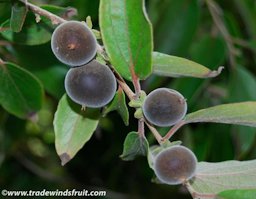 Fig. 1  Ketembilla, Dovyalis hebecarpa, a.k.a. Ceylon gooseberry 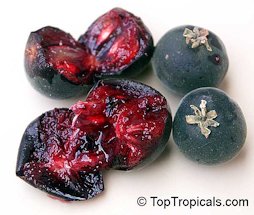 Fig. 2  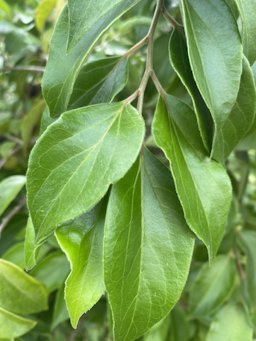 Fig. 3  Ceylon gooseberry D. hebecarpa, Puerto Rico 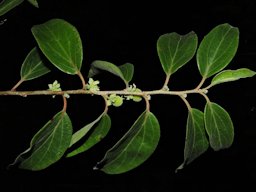 Fig. 4  D. hebecarpa  Fig. 5  D. hebecarpa, Costa Rica 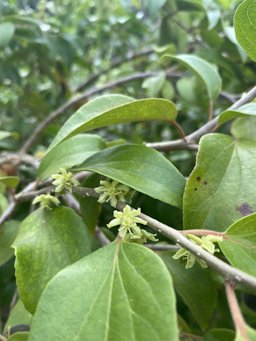 Fig. 6  D. hebecarpa, Puerto Rico ![Credit: 阿橋 HQ, Flickr 錫蘭莓Ceylon Gooseberry, Dovyalis hebecarpa [新加坡植物園 Singapore Botanic Gardens]](images2/Kitem13256.jpg) Fig. 7  錫蘭莓Ceylon gooseberry, D. hebecarpa [新加坡植物園 Singapore Botanic Gardens]  Fig. 8  D. hebecarpa, Costa Rica 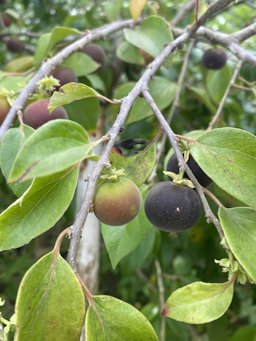 Fig. 9  Ceylon gooseberry D. hebecarpa, Puerto Rico 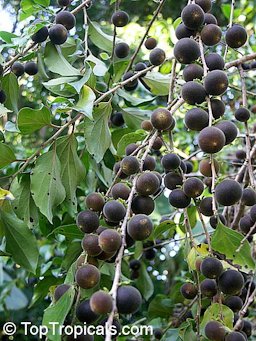 Fig. 10  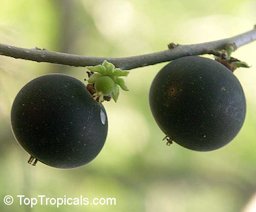 Fig. 11  D. hebecarpa  Fig. 12  Ceylon gooseberry, Puerto Rico |
Scientific
name Dovyalis hebecarpa (Fardner) Warb. Pronunciation doh-vee-AY-liss hee-be-KAR-puh 14 Common names English: Ceylon gooseberry, ketembilla, kitembilla; Brazil: groselha-do-Ceilao; Chinese: xi-lin-cu, his-lu-ts’u-li; Cuba: aberia; French: groseillier de Ceylan, ketembillier; German: Kaffernp flaume; India: kocu vetti (Tamil); Spanish: quetembilla; Sri Lanka: ketembilla, kitaembilla, kitembilla, kithaembilla (Sinhala), kocu vetti (Tamil) 1 Synonyms Aberia gardneri Clos., A. hebecarpa (Gardner) Kuntze, Rumea hebecarpa Gardner Relatives Abyssinian gooseberry (D. abyssinica), tropical apricot (D. abyssinica x hebecarpa), governor's plum (Flacourtia ramontchi), common souberry (D. rhamnoides), Batoko plum (F. inermis), fried egg tree (Oncoba spinosa), kangu (F. sapida), paniala (F. dataphracta), rukam (F. rukam), wild apricot (D. zeyheri) Family Salicaceae (willow family) formerly Flacourtiaceae Origin Sri Lanka (Ceylon) and India USDA hardiness zones 10a-11 14 Uses Fruit; ornamental; wind-break 1 Height 15-20 ft (4.5-6 m) 2 Spread 30 ft (9 m) 2 Crown Many branched crown 11 Plant habit Evergreen; spiny; arborescent shrub (treelike) 4 Growth rate Rapid Trunk/bark/branches Long, slender, arching, wide-spreading branches; trunk/lower branches have sharp, 1.5 in. (4 cm) long spines 1 Leaves Alternate; simple; elliptic to ovate; grey-green; glabrous; wavy entire leaf margin 1 Flowers Unisexual or sometimes perfect; axillary; inconspicuous; greenish yellow; May-June 3 Fruit Subglobose berry; up to 1 in. (2.5 cm) in diameter; maroon-purple; velvety pubescent; sepals/stigma persistent; bitter skin 4 Season May-June; Oct.-Nov.; two crops per year are usually produced 2,4,8 Light requirement Full or filtered sun 8 Soil tolerances Variety of soils, acid and calcareous; requires well drained conditions 2 pH preference 6.5-7.5, tolerating 5.8-8 12 Drought tolerance Drought resistant once established 8 Aerosol salt tolerance Tolerates salt spray 1 Cold tolerance Hardy to the upper 20 °F (-6.67 °C) 8 Plant spacing 20-26 ft (6-8 m) 3 Invasive potential * None reported Pest resistance Often infested with the Caribbean fruit fly Known hazard Sharp spines Reading Material Kitembilla, Fruits of Warm Climates The Ketembilla, Manual Of Tropical And Subtropical Fruits The Kitembilla, also called Ceylon gooseberry, should not be confused with Ceylon Hill gooseberry or cherry, rose or downy myrtle, Rhodomyrtus tomentosa, which is prohibited in north, central and south Forida. This species was formerly placed in the family Flacourtiaceae now a defunct family of flowering plants whose former members have been scattered to various other families. 1 Four species are grown in Florida with some frequency: the Abyssinian gooseberry, Dovyalis abyssinica, a shrub native to eastern Africa that bears a mildly astringent orange fruit; the Dovyalis hybrid or tropical apricot, Dovyalis abyssinica x hebecarpa, which bears acidic, velvety orange-brown fruit and the kei apple, Dovyalis caffra from Africa which was introduced into Florida prior to 1900. 9 Origin/Distribution Originating from Sri Lanka and India, now cultivated pantropically. In South-East Asia mainly in the Philippines. 4 It was introduced into the United States by Dr. David Fairchild and was one of the few fruits he admitted he never liked very much. The first fruiting specimens in the western hemisphere were apparently those growing in southern Florida. 2 The ketembilla is a better fruit than its congener the umkokolo (Dovyalis caffra), but the plant is somewhat more limited in its distribution. From its native home in Ceylon it has been brought to the Western Hemisphere, where it may now be found in a few gardens in Florida, Cuba, and California; elsewhere it is little known. 5 Description Somewhat better-known than the kei apple, q.v., the ketembilla, Dovyalis hebecarpa Warb. (syns. Aberia gardneri Clos.; Roumea hebecarpa Gard.), is often called Ceylon gooseberry; sometimes ketambilla, or kitembilla; and it is known as aberia in Cuba and Central America. 2 The shrub or small tree reaches no more than 15-20 ft (4.5-6 m) in height but its long, slender, arching, wide-spreading branches may cover 30 ft (9 m) of ground. Sharp spines to 1 1/2 in (4 cm) long, are plentiful on the trunk and lower branches. 2 Leaves The alternate leaves are elliptical to ovate, pointed, 2 3/4 to 4 in (7-10 cm) long, wavy-margined, finely velvety, with pinkish, woolly petioles, and thin in texture. 2 They are held alternately zigzagged in 2 rows along the twigs. They are shiny green above, softly hairy and yellow-green below. 6 Flowers Male, female and hermaphrodite flowers are borne on separate trees. They are petalless, greenish-yellow, nearly 1/2 in. (1.25 cm) wide and clustered in the leaf axils. 2 Fruit The fruit, borne in great abundance, is globose, 1/2 to 1 in (1.25-2.5 cm) wide. Its thin, bitter skin turns from somewhat orange to dark purple on ripening and is coated with short, grayish-green, velvety hairs, unpleasant in the mouth. The pulp is very juicy, extremely acid, purple-red, enclosing 9 to 12 hairy seeds about 1/4 in (6 mm) long. 2 Their ripe, purple pulp is sweet-and-sour, with a taste reminiscent of gooseberries, hence their common name. 6 Varieties There is no established cultivar but selections can be made from the variability that occurs in fruit taste ranging from sweet to astringent. 3 Propagation It can be propagated from the seeds. Plants grown from the seed show variable characters and male or female plants cannot be distinguished by growth characteristics. Therefore vegetative methods of propagation such as cuttings, budding and grafting should be used. Budwood and cuttings should be taken from selected mother trees having perfect flowers and good quality fruits. 3 Climate The tree thrives from sea-level to 1,200 m. It does well in wet or semi dry areas but requires adequate supply of water during fruit development. It does not tolerate waterlogged conditions. It is extremely drought resistant and also tolerates sea spray. A hardy tree, that thrives on any soil including limestone. In Florida, the tree grows well on sand or limestone, but a rich, friable soil is best for maximum fruit production. 1 Planting Few male plants should also be planted throughout the orchard to obtain better fruit set. 3 Pruning It is often necessary to prune out the tops of older plants to alleviate overcrowding by the numerous branches. 3 Irrigation Irrigation should be done during dry weather. The fruit size and quality is good if soil moisture is sufficient during the fruit development period. 3 The species is quite resilient once established. 8 Pests Fruits generally get infested with the larvae of the Caribbean fruit fly (Anastrepha suspensa). 2 Food Uses The fruit is eaten fresh, with sugar, as well as after cooking and is also preserved. It is a good source of vitamin C and protein. The juice from its berries is of intense red colour and makes excellent jelly, jam and beverage. The skin of the fruit is bitter and has to be removed before processing. 3 The very sour and astringent fruits are almost too acid to eat raw and this is compounded by its velvety hairs which are objectionable in the mouth. The fruits are excellent for making preserves, jelly, jam and juice. 1 In Florida, in the past, the ketembilla was used primarily for jelly. Recipes developed in Hawai'i include juice, spiced jelly, ketembilla-papaya jam, ketembilla-guava jelly, and ketembilla-apple butter. In Israel, the fruit is valued mainly as a source of jelly for export. 2
Medicinal Properties ** None known Other Uses In the West Indies and Central America, honeybees are seen to work the blossoms eagerly from July to December. 2 General H. R. Macmillan, in his Tropical Gardening and Planting, suggests that this species is a good choice for encouraging birds into the garden because, '...it has been estimated that one bird will eat at least 50-100 caterpillars per day,' providing excellent, organic pest control. 6 Other Edible Dovyalis species: Abyssinian Gooseberry, D. abyssinica Kei Apple, D. caffra Tropical Apricot, D. hebecarpa x D abyssinica List of Growers and Vendors |
||
| Bibliography 1 Lim, T. K. "Edible medicinal and non-medicinal plants, Fruits, vol. 5." ZLibrary, 2013, b-ok.cc/book/2145025/84910f?dsource=recommend. Accessed 21 Apr. 2022. 2 Fruits of Warm Climates. Julia F. Morton. Miami, 1987. 3 Pareek, Om Prakash, and Suneel Sharma. "Underutilized Fruits and Nuts Vol.2: Fruits of tropical region." EPDF, epdf.pub/underutilized-fruits-and-nuts-vol2-fruits-of-tropical-region.html. Accessed 21 Apr. 2022. 4 Jansen, P. C. M., et al. "Dovyalis hebecarpa (Gardner) Warb." Edible fruits and nuts, Plant Resources of South-East Asia No 2, Edited by E. W. M. Verheij, and R. E. Coronel, PROSEA Foundation, Bogor, Indonesia, record 1631, 1991, PROSEA, (CC BY-NC-SA 3.0), www.prota4u.org/prosea/view.aspx?id=1631. Accessed 21 Apr. 2022. 5 Popenoe, Wilson. Manual Of Tropical And Subtropical Fruits. 1920, London, Hafner Press, 1974. 6 Barwick, Margaret. Tropical & Subtropical Trees. A Worldwide Encyclopaedic Guide. London, 2004. 7 "Dovyalis hebecarpa (Gardner) Warb. synonyms. " World Flora Online, WFO Taxonomic Backbone, www.worldfloraonline.org/taxon/wfo-0000925151. Accessed 22 Apr. 2022. 8 "Ketembilla, Dovyalis hebecarpa, a.k.a. Ceylon Gooseberry." Trade Winds Fruit, www.tradewindsfruit.com/content/ketembilla.htm. Accessed 22 Apr. 2022. 9 Boning, Charles R. Florida's Best Fruiting Plants- Native and Exotic Trees, Shrubs, and Vines. Sarasota, Pineapple Press, 2006. 11 Lorenzi, Harri, et al. Brazillian Fruits & Cultivated Exotics (for consuming in natura). Nova Odessa, Instituto Plantarum de Estudos da Flora, 2006. 12 Fern, Ken. "Dovyalis hebecarpa." Ecocrop, Useful Tropical Plants Database, (CC BY-NC-SA 3.0), tropical.theferns.info/viewtropical.php?id=Dovyalis+hebecarpa. Accessed 23 Apr. 2022. 13 Martin, F. W. "Perennial Edible Fruits of the tropic: an Inventory." USDA, Agricultural Research Service, Agriculture Handbook no. 642, 1987, Public Domain, www.naldc.nal.usda.gov/download/CAT87886130/PDF. Accessed 23 Apr. 2022. 14 "Dovyalis hebecarpa." Dave's Garden, davesgarden.com/guides/botanary/go/10437/. Accessed 28 Apr. 2022. Video v1 "How to Use Ceylon Gooseberry, Recipes." Dasmic Kitchen and Life, 27 Feb. 2020, (CC0), www.youtube.com/watch?v=3MWRMb4qh1w. Accessed 28 Apr. 2022. Photographs Fig. 1 "Ketembilla, Dovyalis hebecarpa, a.k.a. Ceylon Gooseberry." Trade Winds Fruit, www.tradewindsfruit.com/content/ketembilla.htm. Accessed 22 Apr. 2022. Fig. 2,10,11 "Dovyalis hebecarpa." Top Tropicals, toptropicals.com/catalog/uid/dovyalis_hebecarpa.htm. Accessed 28 Apr. 2022. Fig. 3,6,9,12 laurianrosa. "Ceylon Gooseberry Dovyalis hebecarpa, Puerto Rico." iNaturalist, Research Grade, 8 Oct. 2021, (CC BY-NC 4.0), www.inaturalist.org/observations/97586345. Accessed 22 Apr. 2022. Fig. 4,5,8 Hammel, Barry. "Dovyalis hebecarpa (Gardner) Warb. Costa Rica." World Flora Online, 27173, WFO Taxonomic Backbone, (CC BY-NC-SA 3.0), www.worldfloraonline.org/taxon/wfo-0000925151. Accessed 22 Apr. 2022. Fig. 7 阿橋 HQ. "錫蘭莓Ceylon Gooseberry, Dovyalis hebecarpa [新加坡植物園 Singapore Botanic Gardens]." Flickr, 24 July 2011, (CC BY-SA 2.0), www.flickr.com/photos/52582306@N03/9216131092. Accessed 22 Apr. 2022. * UF/IFAS Assessment of Non-native Plants in Florida's Natural Areas ** Information provided is not intended to be used as a guide for treatment of medical conditions. Published 28 Apr. 2022 LR |
|||